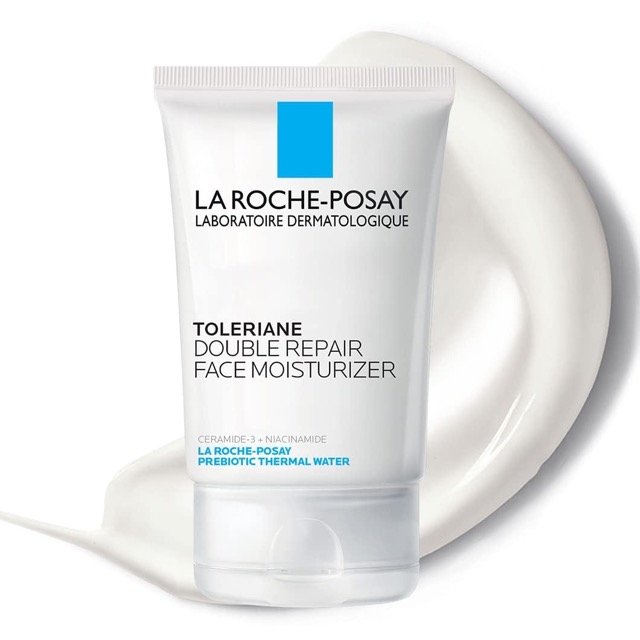Bariatric surgery has emerged as a crucial intervention for individuals struggling with obesity and its associated comorbidities, such as type 2 diabetes, hypertension, and sleep apnea.
These surgical procedures aim to achieve significant and sustained weight loss, thereby improving overall health and quality of life for patients. Among the various types of bariatric surgeries, two widely performed techniques are the one-anastomosis gastric bypass (OAGB) and Roux-en-Y gastric bypass (RYGB).
The OAGB procedure involves creating a smaller stomach pouch and a single connection to the small intestine, which not only restricts food intake but also alters nutrient absorption. This approach has gained attention due to its simpler technique and shorter operative time.
In contrast, RYGB has been a long-standing method in weight loss surgery, involving the creation of a small stomach pouch and rerouting of the small intestine to this pouch, leading to similar restrictive and malabsorptive effects. It has a proven track record and has been widely studied, making it a common choice among surgeons and patients alike.
As the global prevalence of obesity continues to rise, the need for effective treatments has never been more urgent. Bariatric procedures such as OAGB and RYGB offer viable solutions, yet understanding their individual merits is key for both patients and healthcare professionals when considering surgical options.
The significance of the superiority study comparing OAGB and RYGB lies in its potential to inform clinical choices, enhance patient outcomes, and streamline the approach to weight management. Through careful examination of these two techniques, we can better appreciate their differences and similarities, thereby enhancing the discourse surrounding weight loss surgery options.
Overview of the Superiority Study
The Superiority Study was designed to evaluate and compare the effectiveness of two prominent types of weight loss surgery: One-Anastomosis Gastric Bypass (OAGB) and Roux-en-Y Gastric Bypass (RYGB).
The primary objective of this study was to determine which surgical method leads to more significant weight loss and better metabolic outcomes for patients battling obesity. As obesity continues to rise globally, understanding the nuances of various surgical options becomes essential for both patients and healthcare providers.
One of the significant aspects of the Superiority Study was its meticulous design. The researchers standardized bypass lengths across both surgical techniques, thereby eliminating potential confounding variables that could skew results.
By maintaining the same bypass length, the study aimed to establish a direct comparison between the two methods while ensuring that any observed differences in outcomes could be attributed to the type of surgery rather than variations in surgical technique. This is crucial for drawing reliable conclusions about the efficacy of OAGB vs RYGB.
Recruiting participants for the study involved a rigorous selection process. The researchers sought out candidates who met specific criteria, ensuring a diverse sample that accurately represents the broader population experiencing obesity.
Patients were randomly assigned to either the OAGB or RYGB groups, a methodology that enhances the credibility of the findings by reducing bias in treatment allocation. Such randomization is a hallmark of well-designed clinical studies, allowing for more trustworthy comparisons between treatment outcomes.
Central to the objectives of the Superiority Study was the emphasis on evaluating weight loss and metabolic improvements as primary focus points.
Understanding how each surgical method affects weight loss progress and metabolic health is vital for making informed decisions regarding treatment options. By closely monitoring these parameters, the study aspires to contribute valuable insights into the ongoing discourse surrounding optimal surgical interventions for obesity management.
Weight Loss Outcomes: A Comparative Analysis
The comparative analysis of weight loss outcomes following One-Anastomosis Gastric Bypass (OAGB) and Roux-en-Y Gastric Bypass (RYGB) presents insightful findings that are crucial for individuals considering weight loss surgery.
Both surgical procedures have gained traction for their effectiveness in facilitating significant weight loss; however, understanding their distinct impacts on patient outcomes can guide better decisions for prospective patients.
Data collected from various studies demonstrates that both OAGB and RYGB contribute to substantial weight loss over time. Specifically, both techniques yield comparable results in terms of percentage excess weight loss (%EWL) and total weight loss at six and twelve months post-operative.
Research indicates that patients generally experience an average %EWL of approximately 60% to 70% at the six-month mark following OAGB, while RYGB patients report similar figures within the same timeframe.
This trend continues as both groups approach the twelve-month follow-up, often showing an average %EWL that remains closely aligned, typically ranging from 75% to 85% depending on individual patient profiles and adherence to post-operative guidelines.
In addition to weight loss, the decision-making process regarding the choice between OAGB vs. RYGB benefits from considering other factors such as recovery time, risk of complications, and long-term nutritional impacts.
While both surgeries exhibit promising immediate weight loss outcomes, the advantages of each technique may vary based on patient-specific conditions and preferences. Ultimately, patients should engage in thorough discussions with their healthcare professionals to ensure their approach to weight loss surgery aligns with their health goals and lifestyle considerations.
Body Composition Changes Post-Surgery
Body composition is a critical factor in evaluating the effectiveness of weight loss surgery. In assessing the changes in body composition following the one-anastomosis gastric bypass (OAGB) and the Roux-en-Y gastric bypass (RYGB), studies reveal notable differences in fat mass reduction and body fat percentage. These alterations are essential indicators of improved health outcomes for patients undergoing these procedures.
Research indicates that both OAGB and RYGB result in significant weight loss, yet the mechanisms leading to these outcomes can vary between the two surgical techniques.
Patients who undergo RYGB typically experience a greater initial reduction in overall weight, but OAGB has shown comparable results over a more extended period. This suggests that while RYGB may instigate faster results, OAGB might support sustained weight loss due to its unique anatomical alterations.
A closer examination of body fat percentage reveals that patients from both groups experience substantial decreases. However, the rate of fat mass reduction can differ. Studies show that OAGB tends to lead to a more pronounced reduction in visceral fat—the fat stored around internal organs—when compared to RYGB. This distinction is particularly relevant since visceral fat is linked to various health risks, including metabolic disorders and cardiovascular diseases.
Furthermore, improvements in body composition not only reflect weight loss but also have profound implications for overall health. Reductions in body fat percentage can lead to enhanced insulin sensitivity and decreased inflammation, contributing to lower risks of obesity-related conditions.
The choice between OAGB vs RYGB ultimately depends on individual patient goals and health conditions, but understanding body composition changes is vital in both surgical options.
Metabolic Improvements and Health Outcomes
In the realm of weight loss surgery, one of the critical aspects examined in the context of oagb vs rygb is the impact on metabolic health, particularly concerning conditions like type 2 diabetes.
Both One-Anastomosis Gastric Bypass (OAGB) and Roux-en-Y Gastric Bypass (RYGB) have been celebrated for facilitating significant weight loss, yet their metabolic benefits extend beyond mere pounds shed.
Studies have shown that patients undergoing these surgical interventions often experience substantial improvements in metabolic parameters, a finding that holds paramount significance for diabetes management.
Research indicates that a considerable percentage of patients who undergo OAGB and RYGB achieve remission of type 2 diabetes, with some reports suggesting remission rates of over 70% in the first few years post-surgery.
This improvement is primarily attributed to reductions in fasting plasma glucose levels and enhanced insulin sensitivity. When analyzing the oagb vs rygb outcomes, it becomes apparent that the hormonal changes resultant from both procedures play a vital role in this metabolic reset.
Specifically, the alterations in gut hormones such as glucagon-like peptide-1 (GLP-1) and peptide YY (PYY) are crucial, as they typically lead to improved glucose metabolism.
Additionally, changes in other metabolic parameters are noteworthy. Patients generally observe decreased levels of triglycerides and improvements in cholesterol profiles, which further contribute to long-term cardiovascular health.
With the rising obesity epidemic and its associated comorbid conditions, the implications of these findings extend into the clinical realm, suggesting that choosing an appropriate surgical method can significantly affect a patient's metabolic health.
Overall, the comparative results of oagb vs rygb reinforce the conclusion that both techniques provide substantial metabolic improvements, offering hope for individuals battling obesity-related health issues.
Hypertension Management Results
Hypertension, or high blood pressure, is a prevalent condition that significantly affects the health of individuals undergoing weight loss surgery.
Recent studies comparing the One-Anastomosis Gastric Bypass (OAGB) and Roux-en-Y Gastric Bypass (RYGB) have provided insight into how these surgical procedures influence the management of hypertension in bariatric patients. Effective weight loss surgery is crucial for improving overall cardiovascular health, particularly in those suffering from obesity-related comorbidities such as hypertension.
Research indicates that both OAGB and RYGB lead to substantial weight reduction, which translates to improved blood pressure control.
However, when examining data on the reduction of antihypertensive medication usage among patients, distinct outcomes emerge between the two surgical groups.
Patients who underwent OAGB demonstrated a more pronounced decrease in the need for antihypertensive medications compared to those who received RYGB. Specifically, around 75% of OAGB patients reported relying less on medications post-surgery, as opposed to 55% of those in the RYGB group.
The greater effectiveness of OAGB in managing hypertension could be linked to its unique physiological alterations, such as changes in gut hormones and metabolism that favor better blood pressure outcomes.
This aspect highlights the significance of surgical choice in the context of managing hypertension, encouraging healthcare professionals to consider patients' individual circumstances and comorbidities while recommending weight loss surgery options.
These findings underscore the importance of monitoring blood pressure post-surgery and adapting treatment plans accordingly. Hypertension management is a critical consideration for bariatric patients, as effective control of blood pressure can prevent the onset of more serious cardiovascular issues.
The results from the OAGB vs. RYGB comparison signify potential advantages of one-anastomosis gastric bypass in alleviating hypertension, thereby enhancing the quality of care for patients struggling with this condition in the context of obesity.
Nutritional Considerations After Surgery
Nutritional outcomes following weight loss surgery are critical for ensuring patients achieve sustained health benefits after procedures like one-anastomosis gastric bypass (OAGB) and Roux-en-Y gastric bypass (RYGB).
One of the primary areas of concern is vitamin D status, as deficiencies can significantly impact postoperative recovery and overall health.
Research indicates that there are notable differences in vitamin D levels and deficiency rates between OAGB and RYGB patients. Understanding these differences is essential for optimizing patient care and addressing potential long-term implications.
Patients undergoing OAGB typically exhibit a different profile of vitamin D absorption compared to those who have undergone RYGB.
This may be attributed to the unique anatomical changes introduced by each surgical technique. Recent studies suggest that individuals who have had OAGB may have a higher rate of vitamin D deficiency post-surgery, likely due to decreased food transit time and the malabsorptive nature of the procedure.
In contrast, RYGB patients often have a relatively better absorption of vitamin D, partly due to the longer common channel, which can facilitate better nutrient uptake.
In terms of patient management, these findings underscore the importance of routine monitoring of vitamin D levels post-surgery. Regular blood tests should be scheduled for patients to identify deficiencies early and implement appropriate interventions, such as vitamin D supplementation or dietary modifications.
Furthermore, healthcare providers should provide tailored nutritional education to patients based on their surgical procedure. This education can empower individuals to make informed decisions regarding their diet, ensuring adequate intake of vital nutrients and minimizing the risk of deficiencies following weight loss surgery.
Adverse Effects: A Comparative Perspective
When examining the rates of adverse effects associated with weight loss surgery, particularly One-Anastomosis Gastric Bypass (OAGB) and Roux-en-Y Gastric Bypass (RYGB), it is essential to highlight that both procedures demonstrate comparable rates of adverse events.
This finding is based on various studies that have investigated the post-operative outcomes of each surgical technique. While minimally invasive surgical techniques in weight loss surgery have become increasingly popular, especially in cases of morbid obesity, the adverse effects still warrant careful consideration in both procedures.
In terms of immediate complications, both OAGB and RYGB may exhibit similar risks such as leakage, infection, or bleeding. These complications, although severe, occur at low rates among experienced surgical teams, emphasizing the importance of choosing skilled practitioners for these surgeries.
Furthermore, patients should be informed about the potential for nutritional deficiencies in both groups, stemming from altered digestive processes. Deficiencies in minerals and vitamins like iron, vitamin B12, and calcium are common after both types of bypass surgeries, necessitating regular monitoring and supplementation.
However, there are subtle differences that might be relevant to post-operative care. For instance, some studies suggest that patients undergoing OAGB may experience a higher incidence of gastroesophageal reflux disease (GERD) compared to those who have RYGB.
Conversely, RYGB patients might be at higher risk for certain specific long-term complications such as internal hernias. These differences may affect patient care strategies. As such, a thorough pre-operative assessment and individualized post-operative plans are crucial for both techniques to minimize risks and enhance recovery outcomes.
Clinical Implications and Recommendations
The findings of the Superiority Study, which compares the outcomes of One-Anastomosis Gastric Bypass (OAGB) and Roux-en-Y Gastric Bypass (RYGB), have significant clinical implications for the practice of bariatric surgery.
It has been established that OAGB can offer several advantages over RYGB, including a more straightforward surgical technique, reduced operative time, and potentially better weight loss outcomes in certain populations. These advantages prompt a reevaluation of when to apply each technique based on individual patient profiles.
Considering patient characteristics, the recommendation to employ OAGB may be particularly advantageous for individuals with severe obesity.
For patients with a body mass index (BMI) exceeding 40, studies suggest that OAGB might result in more substantial weight loss compared to RYGB.
Additionally, for patients looking for a less invasive procedure with quicker recovery times, OAGB may present itself as a more favorable option, allowing for effective weight management with potentially lower complication rates.
Another crucial aspect is the consideration of metabolic comorbidities. Patients with type 2 diabetes or other obesity-related conditions may benefit more from OAGB due to its metabolic effects, which can lead to quicker improvement in glycemic control.
However, some patients with specific anatomical considerations or those who have had previous abdominal surgeries might still be better suited for RYGB due to its long-established track record and the nuanced modifications available for complicated scenarios.
Ultimately, specific recommendations should be grounded in a comprehensive assessment of each patient's unique circumstances, including their health history, surgical risks, and weight loss goals.
The evolving landscape of bariatric surgery indicates a paradigm shift towards more personalized approaches, allowing healthcare professionals to better tailor surgical options to fit individual needs, particularly when contemplating the efficacy of OAGB versus RYGB.
Comparison with Other Weight Loss Interventions
When evaluating the effectiveness of weight loss surgery, it is essential to consider various interventions and their outcomes. One-anastomosis gastric bypass (OAGB) and Roux-en-Y gastric bypass (RYGB) are widely recognized methods that depict substantial weight loss; however, they are not the only options available to patients.
Laparoscopic sleeve gastrectomy (LSG) has gained popularity as a less invasive procedure that significantly reduces stomach volume, thereby promoting weight loss. Studies indicate that LSG may offer considerable weight reduction similar to OAGB and RYGB, with a lower complication rate in certain populations.
In contrast, endoscopic procedures, such as intragastric balloon placement and aspiration therapy, serve as less permanent options for weight loss.
These techniques often cater to patients who may not qualify for surgical procedures. They tend to be effective for short-term weight loss but may not offer the same long-lasting results as OAGB or RYGB. While these procedures have their advantages, the weight loss achieved is often less significant compared to surgical counterparts.
Pharmacological treatments, like prescription appetite suppressants or medications that affect metabolism, can also play an essential role in obesity management.
These treatments are frequently used in conjunction with lifestyle interventions, particularly for individuals who experience difficulties with achieving substantial weight loss through diet and exercise alone. However, the efficacy varies widely among individuals, and sustained weight loss usually necessitates long-term commitment to medication use.
Ultimately, the choice of weight loss intervention should be tailored to the individual patient, accounting for their medical history, weight loss goals, and potential comorbid conditions.
The comparison of OAGB vs. RYGB with other available treatments highlights the necessity of personalized strategies in combating obesity, stressing that a one-size-fits-all approach may not be effective for every individual.







